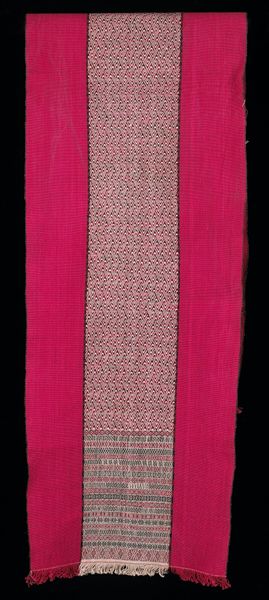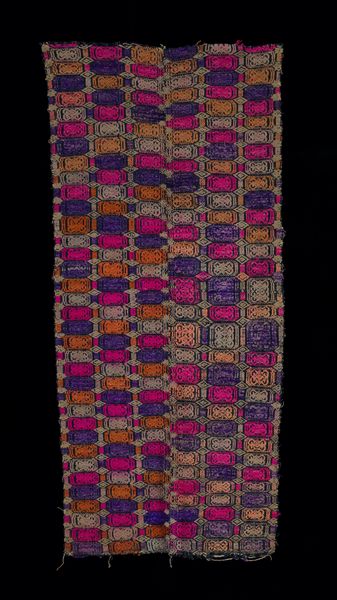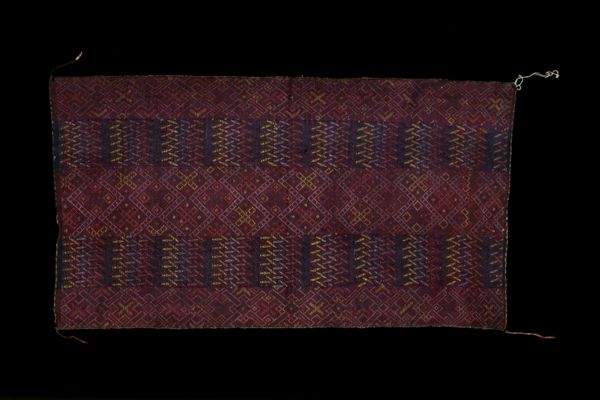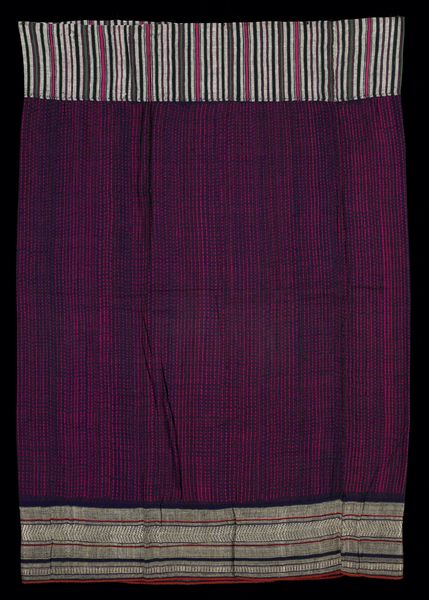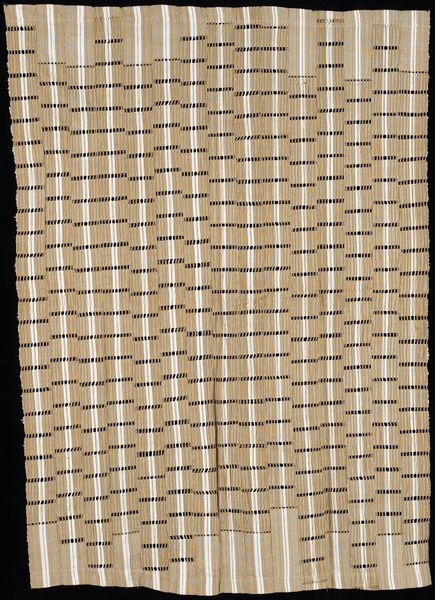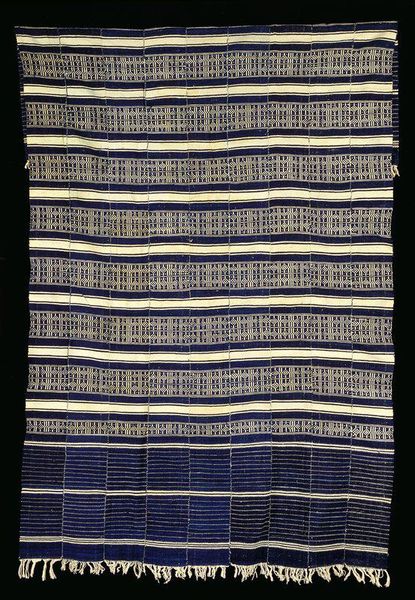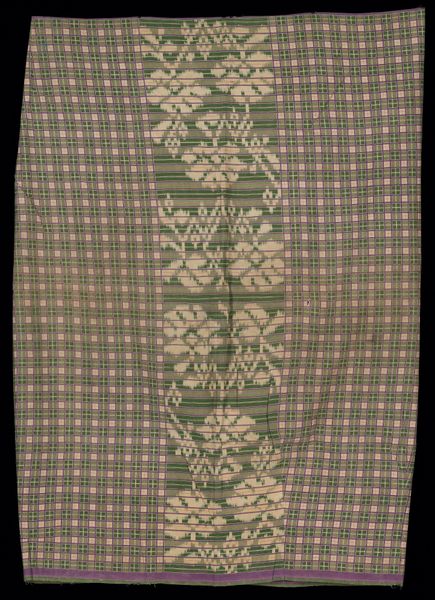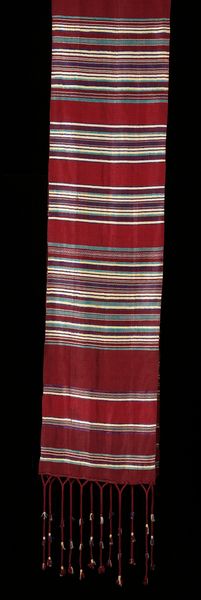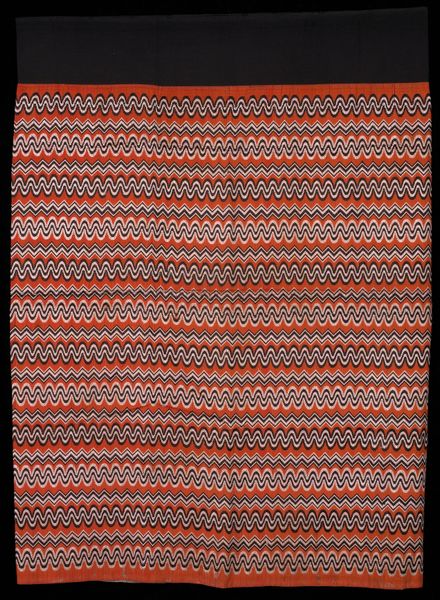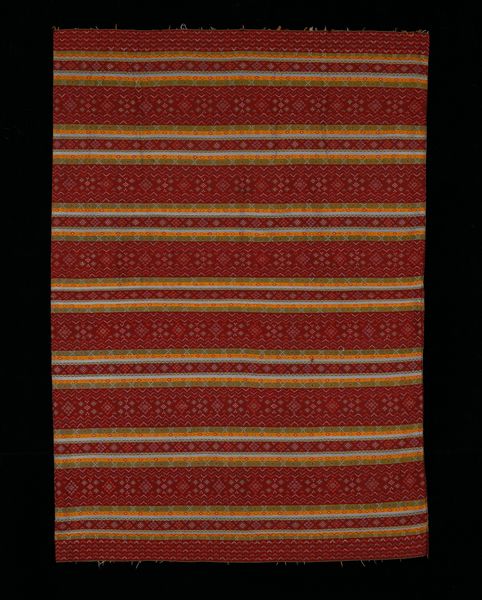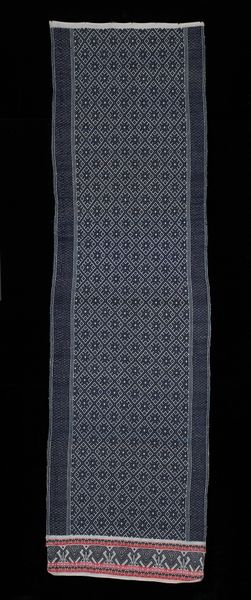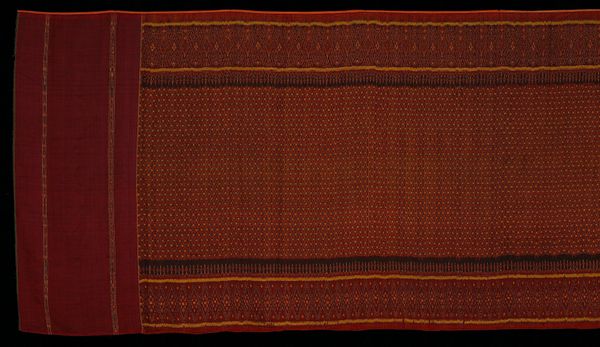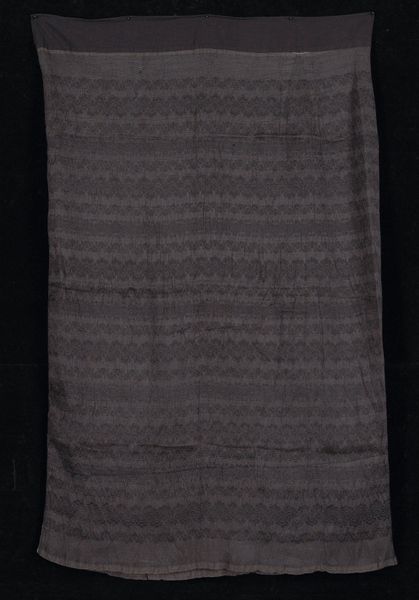
fibre-art, weaving, textile
#
fibre-art
#
weaving
#
text art
#
textile
#
geometric
#
line
Dimensions: 66 x 1 3/4 in. (167.64 x 4.45 cm)
Copyright: Public Domain
Curator: Here we have a captivating piece from around the 20th century entitled "Kera," currently residing at the Minneapolis Institute of Art. It seems to be composed primarily of woven silk and cotton. Editor: Immediately, my eyes are drawn to the striking, almost rhythmic, repetition of lines and the shift in color from the pale section to the darker one. There’s a strong sense of textile geometry at play here. Curator: Absolutely. The piece clearly draws from the Pattern and Decoration movement, which sought to elevate crafts, like textile work, to the status of fine art. Consider how the lines themselves create a subtle variance; observe that each line has individual color motifs woven directly into the warp. Editor: And what of the object's function? Given its materiality and construction, it has a decidedly practical quality, despite its embrace of formal patterns. What's the potential history behind its use in specific communities, rituals, or maybe just domestic spaces? Curator: It prompts questions about domestic spaces, definitely. As it engages so closely with line and form, one can really meditate on the piece. Note the interplay of colors—the soft pinks, the grays—and how they construct lines of both similar and diverging weight. Editor: It makes you think, doesn’t it? Beyond the aesthetic appreciation of patterns and color, is there also a hidden message in those lines? Or in its creation? Can we, in any way, attribute symbolic value to either its components or its utility within specific contexts? Curator: It begs such exploration, I agree. Think of the maker's engagement with medium. One can’t help but acknowledge the intentional crafting of these formalist variations—creating small disruptions to that otherwise strong sense of order and design. Editor: So, in the end, it’s both a celebration of craft, like silk and textile artistry, and a quiet record of the cultures in which its use was embedded. The artwork encapsulates the personal alongside the political and domestic. Curator: Indeed. And to consider its formal nuances is to consider art’s broader historical movements, bringing new dimension to textiles. Editor: Precisely. "Kera" gives us an opportunity to think critically about form and intention across cultures and time periods.
Comments
No comments
Be the first to comment and join the conversation on the ultimate creative platform.
